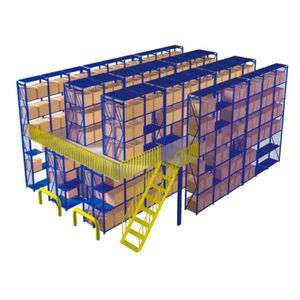
- Furniture, Logistics
- Logistics, Service, Storage
- Storage rack
- Chengdu Sanji Technology
Storage rack aluminumshelf
Add to favorites
Compare this product
Characteristics
- Function
- storage
- Material
- aluminum
- Options
- shelf
Description
SJ-FRST diversified storage turnover series product introduction: The products are high in strength and durable. Supports drawings and samples to process custom-made customized bulk purchases, national special offers: light, medium and heavy racks, beam racks, laminate racks, cantilever racks, steel pallets, folding plate bins, turnover boxes, heavy-duty trolleys in the workshop, etc.
1. Storage shelves are storage equipment based on the six basic functions of logistics: packaging, transportation, loading and unloading, sorting, and information management. With the continuous development of the storage rack industry, more and more industries and companies have used storage racks, and more and more companies have entered the storage industry. Serving friends from all walks of life. The shelf is one of the main facilities of warehousing. It can be said that the shelf is an indispensable part of modern industrial warehouses, logistics centers, and distribution centers. Storage shelves usually have three major accessories, columns, beams, and laminates. This refers to heavy, medium, and light storage shelves, like super heavy, attic storage shelves, and accessories use columns and beams.
2. SJ-FRST company specializes in the production of metal iron pallets, SJ-FRST company metal trays, iron pallets, and aluminum profile pallets. The advantages are stable structure, sturdiness and durability. Compared with wooden pallets, it is stronger and more durable. Compared with plastic pallets, it is more economical.
Catalogs
No catalogs are available for this product.
See all of Chengdu Sanji Technology‘s catalogsRelated Searches
*Prices are pre-tax. They exclude delivery charges and customs duties and do not include additional charges for installation or activation options. Prices are indicative only and may vary by country, with changes to the cost of raw materials and exchange rates.



